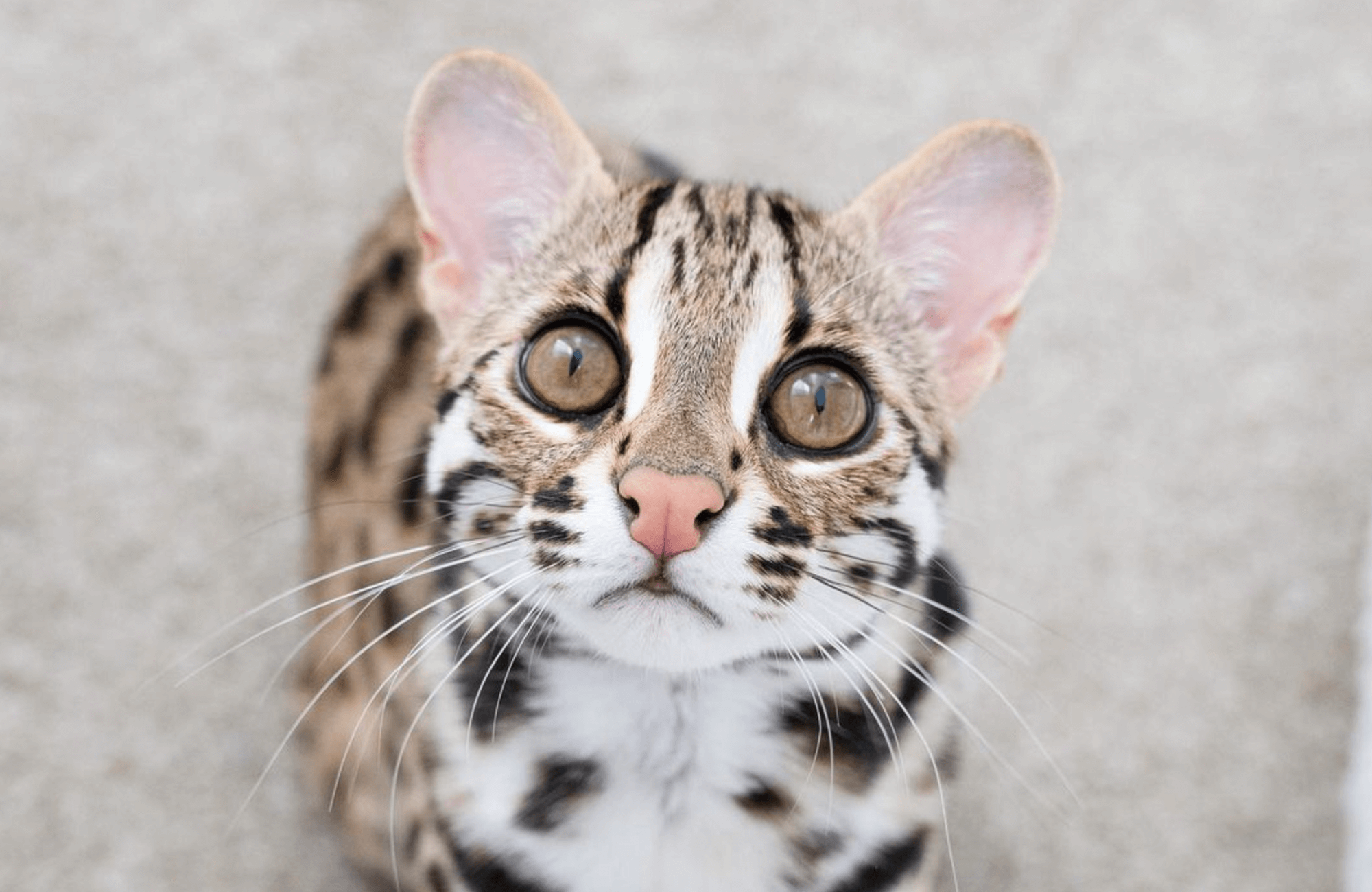Anyone who is familiar with bengal cats will likely also be familiar with the Asian leopard cat, the wild ancestor of the bengal.
The Asian leopard cat is a small wild cat native to Asia.
While some may own the Asian leopard cat as a pet, this cat is fully wild, meaning it can not be domesticated easily and there are many regulations surrounding owning this cat.
How Big Is the Asian Leopard Cat?
The Asian leopard cat is slightly larger than most domestic cats with long hind legs and a muscular frame.
The size of the Asian leopard can vary significantly based on region as there are over 20 documented subspecies of the Asian leopard spanning across all of Asia.
The Asian leopards found in Southeast Asia (P. bengalensis) are much smaller and rarely weigh more than 10 pounds as adults.
Comparing Asian leopards with the size of bengal cats, Asian leopards found in Southern Asia weigh less but are much longer than bengals.
The Asian leopard cats that are found in Northern Asia (P. euptilura) are the same weight as bengals but are almost 10 inches longer.
Here is a breakdown of the dimensions of Asian leopard cats based on region:

How Long Does the Asian Leopard Cat Live?
The Asian leopard cat, generally, lives around 8 – 12 years naturally, and closer to 10-13 years in captivity.
Their lifespan is several years shorter than that of most domestic cats which is to be expected as domestic cats will usually outlive their wild counterparts by a few years.
To compare, the bengal cat will usually live around 12 – 16 years, giving them around 4 more years of total lifespan.
Can You Keep the Asian Leopard Cat As a Pet?
The regulations around owning Asian leopard cats vary by state and country.
In the UK, wild cats are legal to own with a DWA (Dangerous Wild Animal) license.
In the US, these are all licensing requirements and laws for owning exotic pets per state.
In most cases, owning Asian leopard cats is not allowed in the US, and only those who own animal exhibits or are using animals for research are allowed to own an Asian leopard, provided they have a license.
There are 6 states that do not regulate or restrict owning exotic cats as pets, here is a list of all these:
- Alabama
- Delaware
- Nevada
- North Carolina
- Oklahoma
- Wisconsin
Besides these 6 states, a permit or license is needed to own an Asian leopard.
Even with a permit, owning Asian leopards as pets is not ideal, since they will take more time to train and it will be much more difficult to meet their needs than it would be for a domestic animal.
Asian leopards are also more prone to behavioral issues than bengals and other hybrid cats, making owning an Asian leopard a full-time job even for experienced cat owners.
Another reason to think twice about owning an Asian leopard as a pet is that the species is at risk for endangerment, meaning the buying and selling of Asian leopards could potentially further affect the Asian leopard population as a whole negatively.
How Much Does the Asian Leopard Cat Cost?
In states where purchasing an Asian leopard cat is legal, Asian leopards cost around $4,000 – $15,000 depending on that region and whether the Asian leopard is male or female.
Asian leopards are far less common than bengals and more difficult to breed leading to a higher price.
Again, bengal cats and savannah cats are a better option to own as pets and, in most cases, Asian leopards are not well suited for a typical domestic cat lifestyle
Are Asian Leopard Cats Endangered?
Asian leopard cats are currently officially listed by the CITES (Convention on International Trade in Endangered Species of Wild Flora and Fauna) as “least concern”, however there are several threats to the species as a whole that affects conservation.
The main threats to the Asian leopard cat population are deforestation, hunting, habitat loss, urbanisation, commercial trade of its fur, road mortality, diseases, tourism, and a decrease in genetic diversity leading to a higher vulnerability against novel pathogens.
What Do Asian Leopard Cats Eat?
The typical diet of the Asian leopard cat is comprised of small rodents, lizards, amphibians, and birds.
The most common food sources for the Asian leopard are mice and rats, however they will also eat eggs, fish, grass, chickens, and insects depending on their habitat.
What Is the Natural Habitat of the Asian Leopard Cat?
The Asian leopard cat is indigenous to Asia and can be found across most of the continent with concentrations in Korea, Taiwan, and China.
Here is an awesome infographic from Bengal Cats Co made by Laurent Jaccard that breaks down the size, markings, and habitats of the Asian leopard:

The various habitats of the Asian leopard can range from rain forests to coastal areas and valleys depending on that specific leopard cat subspecies.
The two mainland subspecies of the Asian leopard are P. b. euptilura and P. b. bengalensis.
P. bengalensis is found primarily in South and East Asia while P. euptilura can be found in regions such as Russia, Korea, Manchuria, and Taiwan.
The total number of countries that the Asian leopard cat naturally inhabits throughout Asia is 21.
As of recent years, the hunting and commercial trade of Asian leopard has subsided however the overall population stability of the Asian leopard is not entirely known.
This is one of the many reasons why it is very important to buy bengal cats from knowledgeable and ethical breeders who are able to care for wild and hybrid cats properly.
While the Asian leopard may be the size of a house cat, it has the spirit of a tiger and is responsible for one of the most beautiful and playful cat breeds in the world: the bengal.
Photo attribution: source
